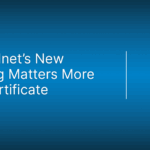Why Switching Payment Providers Is Easier Than It Looks
Switching payment providers is rarely at the top of a merchant’s priority list. It feels risky: what if payments stop working, customers abandon their carts, or recurring billing data gets lost? For many businesses, the fear of downtime outweighs the clear benefits of moving to a better solution.
However, here’s the reality: staying with the wrong provider is often more costly than switching. High fees, limited payment options, poor fraud protection, or outdated technology can quietly eat into your margins and frustrate customers. Over time, these hidden costs can outweigh the temporary risks of migration.
The good news? With the right planning — and the right partner — migration doesn’t have to be painful. By following a structured approach, you can transition smoothly, maintain business continuity, and even use the switch as a chance to strengthen customer trust.
Why It May Be Time to Switch
Most businesses don’t wake up one morning and decide to change their payment provider. It usually comes after months (or years) of small frustrations adding up. If any of the following sound familiar, it may be time to rethink your setup:
Rising or unclear fees
You’re paying more than expected, and fee structures are hard to understand.
Limited payment options
Customers ask for Apple Pay, local wallets, or BNPL — but your provider doesn’t support them.
Compliance worries
New regulations like PSD2 or SCA create headaches, and your provider offers little guidance.
Integration gaps
Connecting your ERP, CRM, or e-commerce platform feels like patchwork instead of a seamless flow.
Slow support response
Issues take days to resolve, leaving your sales on hold.
High decline rates
Transactions are failing for no clear reason, and you lose revenue without explanation.
Each of these problems not only reduces your margins but also risks customer trust. In a competitive market, a checkout that’s slow, unreliable, or limited can directly translate into lost sales.
That’s why many merchants decide to migrate — not just to escape pain points, but to unlock new growth opportunities with a provider that scales with their business.
What a Payment Provider Migration Involves
Switching payment providers is more than just flipping a switch. Behind every checkout button lies a network of processes, data flows, and integrations that keep your business running. A smooth migration means understanding — and carefully managing — these moving parts:
Mapping existing payment flows
Every business has its own checkout logic, recurring billing setups, and fraud checks. Before migration, it’s crucial to document how payments currently flow across your systems.
Critical integrations
Your payment provider doesn’t live in isolation. It’s connected to your ERP, CRM, accounting tools, and e-commerce platforms. Each integration must be tested to avoid gaps in reporting, settlement, or reconciliation.
Customer data and tokens
For subscription models or stored cards, sensitive data like payment tokens must be transferred securely. Losing access to these tokens can interrupt recurring revenue.
Business continuity requirements
Even a few minutes of downtime can mean lost sales and unhappy customers. A migration plan must ensure that payments continue to flow without disruption.
Compliance and security
Regulatory frameworks (e.g., PCI DSS, PSD2, GDPR) add an extra layer of responsibility. A trusted provider should help you remain compliant while migrating.
In short: migration is not only a technical project — it’s a business-critical operation. Done right, it sets you up for long-term growth. Done poorly, it risks downtime, chargebacks, and customer churn.
This is where the choice of partner matters: the more your provider supports you during migration, the smoother and safer the process will be.
What Can Go Wrong If You Don’t Plan Properly
Many businesses underestimate the complexity of switching payment providers. Without careful preparation, a migration can introduce new problems instead of solving old ones. Common pitfalls include:
Downtime and lost sales
Even short checkout outages can lead to abandoned carts and frustrated customers. In competitive industries, those buyers rarely return.
Failed recurring payments
If tokens for subscriptions or stored cards aren’t transferred correctly, recurring billing can break — cutting off a vital revenue stream overnight.
Data migration errors
Customer payment data is highly sensitive. Errors during transfer can cause failed transactions or compliance breaches.
Fraud and chargeback gaps
A gap in fraud prevention during transition exposes your business to higher risk — and opportunistic fraudsters often exploit these windows.
Compliance violations
Falling out of step with PCI DSS, PSD2, or GDPR during migration can result in penalties and damage to your reputation.
Integration breakdowns
If ERP, CRM, or accounting systems stop syncing with your payments, reconciliation and reporting can quickly become a nightmare.
These risks explain why some merchants delay switching providers for too long. But with the right planning — and a provider experienced in guiding migrations — these pitfalls can be avoided entirely.
How to Plan and Execute the Migration
A successful migration doesn’t happen overnight. It requires a structured approach that balances technical setup with business continuity. Here’s a proven roadmap:
Step 1: Assess Your Current Setup
-
Map out your existing payment flows (checkout, recurring billing, fraud checks).
-
List all integrations: ERP, CRM, e-commerce platform, accounting.
-
Document fees, decline rates, and support response times to benchmark improvements.
Step 2: Define Your Migration Goals
-
Clarify what you want to achieve: lower costs, more payment options, stronger compliance.
-
Prioritize critical success factors (e.g., “no downtime,” “full token migration,” “seamless reconciliation”).
-
Involve all stakeholders — finance, IT, compliance, operations.
Step 3: Technical Preparation
-
Set up the new provider in sandbox/test environment.
-
Validate all integrations and run test transactions.
-
Ensure PCI DSS and PSD2 requirements are met.
Step 4: Parallel Run
-
Run old and new providers side by side for a transition period.
-
Compare performance (success rates, settlement times, reporting).
-
Use this phase to fine-tune settings before full cut-over.
Step 5: Secure Data & Token Migration
-
Transfer tokens for stored cards and recurring billing securely.
-
Test recurring payments to confirm continuity.
-
Put safeguards in place for chargebacks and dispute management.
Step 6: Go-Live & Monitor
-
Choose a low-volume period for cut-over to minimize risk.
-
Monitor transactions in real time for the first 24–48 hours.
-
Keep fallback options ready in case of unexpected issues.
Following this roadmap ensures that your business doesn’t just “switch providers” — it upgrades its payment infrastructure without missing a beat.
How to Minimize Risk and Downtime
Even with careful planning, migration comes with inherent risks. The key is to anticipate them and put safeguards in place so payments continue to flow without interruption.
1. Tokenization & Recurring Billing Continuity
Work with a provider that supports secure token migration and ensures all stored payment details are transferred safely without exposing sensitive data. Before switching fully, test recurring payments thoroughly to confirm that all subscription charges process without errors.
2. Chargeback and Fraud Protection During Transition
Keep fraud monitoring active on both your old and new providers throughout the parallel run. Make sure fraud rules and risk checks are properly aligned with your business model, and closely monitor chargeback ratios to ensure compliance and stability during the transition phase.
3. Failover and Fallback Mechanisms
Choose a provider that offers smart routing or fallback options to alternative acquiring paths in case of unexpected issues. Maintain access to your old provider until new payment flows are fully stable, and actively monitor real-time transaction success rates to detect potential problems early.
4. Real-Time Monitoring and Reporting
Track key performance indicators such as authorization rates, settlement delays, and customer declines. Use dashboards and alerts to identify anomalies quickly, and coordinate closely with your finance and operations teams to ensure smooth reconciliation and uninterrupted payment flows.
By applying these safeguards, you minimize not just the technical risks but also the business risks — keeping sales flowing and customer trust intact.
How to Communicate with Customers
Payments are a sensitive part of the customer journey. Even small changes at checkout can cause hesitation if they’re not explained well. That’s why clear communication during migration is just as important as technical preparation.
1. Decide What to Share (and When)
Customers don’t need every backend detail, but they should be informed about any improvements that affect their experience — such as new payment options, stronger security, or faster checkout times. Time your communication to align with the actual rollout rather than announcing too early.
2. Avoid Checkout Surprises
Keep the checkout design and flow familiar to prevent confusion. If new payment methods are added, present them as a positive update that enhances convenience and flexibility. Reassure customers with clear language such as “Now even easier and more secure.”
3. Turn Migration Into a Trust-Building Moment
Frame the switch as an upgrade that benefits customers. Highlight the added security, speed, and payment flexibility your business is introducing. Use simple, visible channels like email, on-site banners, or app notifications to communicate these benefits clearly.
4. Train Your Support Team
Ensure your customer service team is well-informed about the migration process and ready to answer questions confidently. Provide them with FAQs and clear responses to help recurring billing customers understand that their payments will continue without interruption.
Handled well, communication transforms migration from a potential risk into a confidence booster — showing customers that you’re continuously investing in a smoother, safer payment experience.
How Novalnet Makes Migration Easier
Switching payment providers doesn’t have to be stressful. With Novalnet, the migration is designed around your business continuity and your customer experience. Here’s how we make it easier:
Seamless Transition Without Downtime
Your sales don’t stop just because you’re switching providers. Novalnet’s migration specialists ensure that payments continue flowing smoothly, with parallel runs and secure cut-over strategies that minimize disruption.
No Lost Revenue From Subscriptions
If your business relies on recurring payments, token migration is critical. Novalnet securely transfers payment tokens so your subscriptions continue without failed charges — protecting your revenue streams.
Faster Checkout, More Payment Options
Customers expect choice. Novalnet supports 150+ payment methods worldwide, from local options to Apple Pay, Google Pay, BNPL, and beyond — so you can instantly expand your checkout experience.
Peace of Mind With Compliance & Security
We handle the complexity of PCI DSS, PSD2, SCA, and GDPR compliance. That means you focus on growth while we ensure your payment flows are safe and regulation-proof.
Dedicated Support That Knows Your Business
You’re not left alone with documentation. Our migration team works side by side with your IT and finance teams, providing proactive guidance and real-time support to ensure a smooth switch.
With Novalnet, migration isn’t just about changing providers — it’s about upgrading your entire payment strategy to be more reliable, more scalable, and more customer-friendly.
Case Example: A Smooth Migration in Practice
A European subscription-based retailer had been struggling with their old payment provider: recurring billing failures, limited local payment options, and long support response times. The business knew it had to switch, but feared the risks of migration — especially the possibility of losing subscribers during the transition.
With Novalnet’s support, the migration was completed in three phases: sandbox testing, parallel run, and secure token transfer for recurring customers. The result:
-
Zero downtime during checkout
-
100% continuity of recurring billing — no subscription losses
-
Access to 150+ payment methods worldwide, including Apple Pay, Google Pay, BNPL, and key regional wallets
-
Reduced fees and improved settlement times compared to their old provider
Within the first quarter after switching, the merchant reported higher conversion rates and fewer customer support tickets related to payments.
This case reflects what we aim to deliver for every migration: not just a smooth technical transition, but measurable business improvements from day one.
Conclusion: Switching as an Opportunity, Not a Risk
Switching payment providers isn’t just about avoiding pain points — it’s about future-proofing your business. Done right, migration protects revenue, improves customer experience, and unlocks new growth opportunities.
At Novalnet, we specialize in guiding merchants through this journey with 150+ global payment methods, built-in compliance, and dedicated migration support. That means you don’t just switch providers — you upgrade to a complete payment solution.
We’ve guided countless merchants through the migration process. From secure token transfers for recurring payments to seamless integrations with leading e-commerce platforms, our team ensures that switching isn’t a risk — it’s an opportunity to grow.
Talk to our migration experts today and discover how Novalnet can help you switch without downtime, without lost sales, and with more opportunities for growth.
Frequently Asked Questions (FAQ)
1. Why should I switch my payment provider?
You may need to switch if your current provider has high fees, limited payment options, poor support, or lacks compliance with regulations like PSD2 or PCI DSS. A better provider can improve checkout conversion, reduce costs, and support global growth.
2. Is switching payment providers risky?
It can be risky if not planned properly. Downtime, failed recurring payments, or compliance issues are common pitfalls. With the right partner, however, the transition can be smooth and risk-free.
3. How do I avoid downtime during migration?
A safe migration involves sandbox testing, parallel runs (old + new provider side by side), and carefully planned cut-over. This ensures payments continue without disruption.
4. What happens to my recurring billing and stored payment data?
Recurring billing data is transferred using secure token migration. With Novalnet, all stored payment details are moved safely, so your subscribers never miss a payment.
5. How long does a payment provider migration take?
Timelines vary depending on integrations and complexity. A simple migration can be done within weeks, while more complex setups may take longer. Novalnet’s migration team works to minimize transition time.
6. How can I inform customers about the switch?
Keep communication clear and simple. Highlight benefits such as new payment options and stronger security, and avoid overwhelming customers with technical details.
7. How do I switch from my old provider to Novalnet?
Switching to Novalnet follows a structured process:
-
Assessment – Review your current setup, payment flows, and integrations.
-
Sandbox & Testing – Set up Novalnet in test mode to validate all transactions.
-
Parallel Run – Operate both providers side by side to ensure stability.
-
Token Migration – Securely transfer stored cards and subscriptions.
-
Go-Live – Switch fully to Novalnet with monitoring and fallback options.
Our dedicated migration team supports you at every step, ensuring zero downtime and full continuity of payments.
Alexander Burba is a Performance Marketing Specialist at Novalnet AG in Munich, where he leads digital acquisition and brand initiatives. With over 7 years of experience in B2B SaaS, FinTech, and IT marketing, Alexander has supported international teams in Germany and Ukraine, serving clients across the EU, US, and global markets. He combines data-driven strategy with cross-functional collaboration to deliver measurable growth for Novalnet and its partners.












